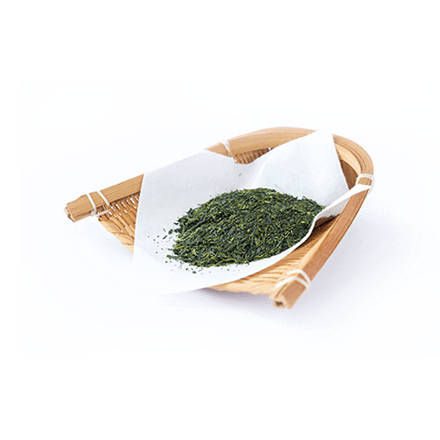Disclosure based on the TCFD
and TNFD Recommendations


Awareness of Climate Change and Natural Capital and Biodiversity
The business activities of the ITO EN Group are supported by ecosystems which, by providing ecosystem services through the interactions between different kinds of natural capital, provide the ITO EN Group with the various benefits and blessing of nature. Environmental issues that decrease natural capital, including biodiversity, or cause it to be lost may increase the risks the ITO EN Group faces in its corporate activities. We believe that our efforts to solve environmental issues through business will address climate change and reduce the excessive consumption of natural capital, which will ultimately lead to sustainable corporate growth. At the same time, it is believed that corporate activities will be more sustainable if corporations implement initiatives to solve environmental issues, and biodiversity and natural capital to enable it to recover. The ITO EN Group has started by analyzing its Tea Leaves and Beverages Business, which accounts for at least 90% of its consolidated net sales. Regarding the ITO EN Group's disclosure of climate change-related information, we conducted a scenario analysis in accordance with the Task Force on Climate-Related Financial Disclosures (TCFD) recommendations in FY2020. Since then, we have been enlarging the scope of our analysis every year to include more businesses to facilitate our monitoring of our whole value chain. Initially, we analyzed the raw materials for our mainstay green tea products in our value chain to confirm the impact of climate change on the crop and the quality of tea leaves. Since FY2021, we have been analyzing the raw materials of our products, such as barley and coffee, as well as any potential damage that may be incurred by manufacturing plants and logistics bases. In FY2023, the Group first disclosed nature-related information. Referencing various Taskforce on Nature-related Financial Disclosures (TNFD) guidance documents, we prioritized issues based on their materiality to the Group's businesses. We conduct analyses of the green tea business from the perspective of natural capital and biodiversity. In FY2024, we expanded the scope of these analyses to include the coffee business. In the process of identifying and assessing material risks and opportunities in the Group's businesses connected to climate change and nature-related matters, we identified the close relationship between climate change, natural capital and biodiversity. We believe that it is important to conduct individual assessments and analyses in an integrated manner and also to resolve issues in a unified manner. To disclose information in accordance with the recommendations of the TCFD and TNFD, we will expand the scope of the information we analyze, and enhance our analyses. Amid and environment and conditions that are changing moment to moment, we collect up-to-date information while advancing discussions and formulation of risk management methods, indicators and targets linked to KPIs. We will continue to analyze risks and opportunities from the perspective of the relationships between climate change and natural capital or biodiversity and comprehensively respond to increase the sustainability of the ITO EN Group and society.
The ITO EN Group stated its support for the Task Force on Climate-related Financial Disclosures (TCFD) recommendations in April 2022 and for the TNFD recommendations in April 2024. It also participates in the TNFD Forum.* In accordance with both the TCFD and TNFD recommendations, we will continue to expand the scope of the information we disclose and enhance our analyses.
- *
- The TNFD Forum is a group of stakeholders who support the TNFD’s discussions, The group is composed of companies, institutions and organizations aligned with the philosophy of the TNFD.
Response to the TCFD and TNFD Recommendations (Summary)
| Item | Details and actions |
|---|---|
| Governance |
The Sustainability Promotion Committee (chaired by the President) discusses policies, strategies, and measures to address such issues as climate change, natural capital and biodiversity. Material issues are reported to and deliberated by the Board of Directors and Executive Board, then reflected in management strategy. Led by the Chief Sustainability Officer (CSO), this system for promoting environmental initiatives centered on climate change and strengthen the conservation and restoration of natural capital and biodiversity. Results of outside rating agencies on ESG, including climate change factors, are reflected in compensation assessments for executives. Under the responsibility of the CHRO (Chief Human Resource Officer), an initiative promotion system has been established, centred on the Risk Management Committee (Chair: President), which is an advisory body to the Board of Directors. For stakeholders affected, such as indigenous peoples and local communities, due diligence is conducted on raw material suppliers and a grievance mechanism has been established, based on the ITO EN Group Human Rights Policy and the ITO EN Group Fundamental Supplier Policy. |
| Strategies |
TCFD (Climate Change)[Scenario analysis] Analyze transition risks and opportunities assuming a complete transition to a Net zero society under the 1.5/2°C scenarios Analyze physical risks and opportunities assuming continued global temperature rises and worsening impact under the 4°C scenario [Results of scenario-based analyses] Transition risks Increase of costs due to the imposition of carbon taxes Impact estimated in FY2030 Physical risks Analysis of risks to plants owned by ITO EN, Group companies and their contractors and to logistics warehouses related to wind and flood damage Impact on harvest volume and quality of raw materials for mainstay products (i.e., green tea, barley and coffee beans) [Transition plan] For Scopes 1 and 2 reduction measures, create a roadmap and KPIs centered on three pillars—switching to electric sales vehicles, promoting energy conservation, and transitioning to renewable energy—then promote initiatives For Scope 3, promote reductions through using lighter weight contaniners and packaging, transition to sustainable materials, and strengthening engagement and partnership with suppliers |
TNFD (Natural capital and biodiversity)[Scoping: Selection of targets for analysis and evaluation in all businesses] Analysis of business activities and their relationship to biodiversity conservation and natural capital on the scope of direct operations in the Tea Leaves and Beverages Business and all its value chains Selection of green tea, which is the raw ingredient for our main products, and coffee, which is heavily impacted by climate change and biodiversity conservation, as targets for analysis and evaluation [Locate: Discovery of points of contact with nature] Material regions: Areas considered important for business Regions requiring special attention: Weak areas from the viewpoint of biodiversity [Evaluate: Diagnosis of dependencies and impacts] Understand the high degree of dependence and impact on nature at the cultivation stage Recognize dependence on the abundance of water, climate, and pests In addition, recognize the high impact on nature of packaging materials such as plastic bottles, along with cultivation [Assess: Evaluation of risks and opportunities] Analyze business risks and opportunities diagnosed during “Evaluate” to identify the ideal state. Then, formulate present and long-term countermeasures to achieve the ideal state [Prepare: Future initiatives and activities] Organize future initiatives and activities to reduce risks regarding the risks and opportunities identified during “Assess.” In addition, clarify indicators and targets regarding risks and opportunities Going forward, we will aim to expand the scope of application and enhance the analytical content. |
|
| Risk and Impact Management |
Matter that the TCFD (climate change) and TNFD (natural capital and biodiversity) both addressThe Risk Management Committee, which is an advisory body to the Board of Directors chaired by ITO EN's President and Executive Officer, manages climate change risks and efforts to conserve and restore natural capital and biodiversity, which are recognized as significant risks, through an integrated Group-wide risk management system. |
| Metrics and targets |
Matter that the TCFD (climate change) and TNFD (natural capital and biodiversity) both addressIn accordance with the Global Core Disclosure Metrics advocated by TNFD, we have established measurement metrics and targets concerning dependencies and impacts. The targets are as follows |
*1 ITO EN, LTD. and its consolidated subsidiaries are covered
*2 Dedicated production lines at our own facilities and partner factories
*3 Our own factories and some partner factories
